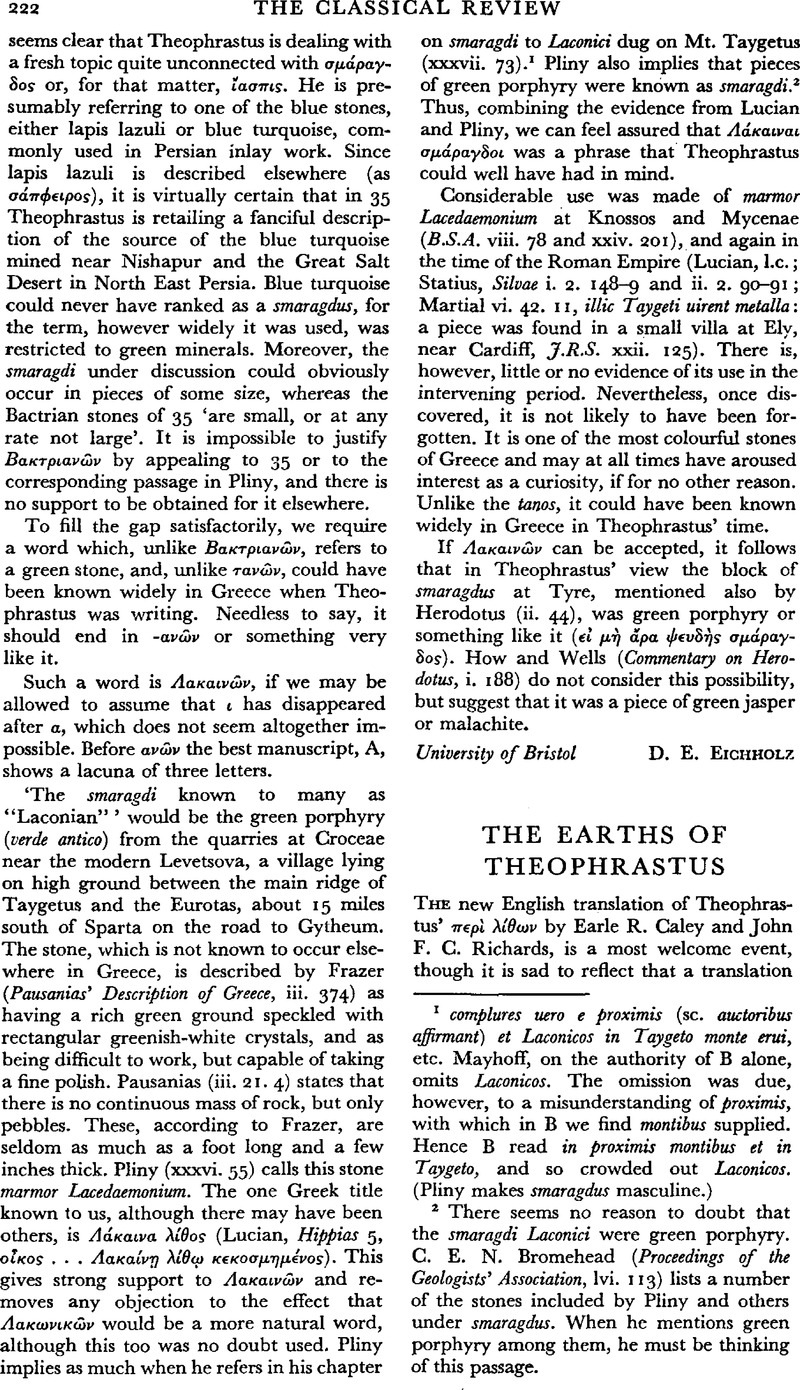Article contents
The Earths of Theophrastus
Published online by Cambridge University Press: 13 February 2009
Abstract

- Type
- Review Article
- Information
- Copyright
- Copyright © The Classical Association 1958
References
page 222 note 1 complures uero e proximis (sc. auctoribus affirmant) et Laconicos in Taygeto monte etui. Mayhoff, on the authority of B alone, omits Laconicos. The omission was due, however, to a misunderstanding of proximis, with which in B we find montibus supplied. Hence B read in proximis montibus et in Taygeto, and so crowded out Laconicos. (Pliny makes smaragdus masculine.)
page 222 note 2 There seems no reason to doubt that the smaragdi Laconici were green porphyry. Bromehead, C. E. N. (Proceedings of the Geologists' Association, lvi. 113)Google Scholar lists a number of the stones included by Pliny and others under smaragdus. When he mentions green porphyry among them, he must be thinking of this passage.
page 223 note 1 See, however, Eichholz, D. E., C.R., lxvi (1952), 144–145Google Scholar; lix (1945). 52.
page 223 note 2 Bailey, K. C., The Elder Pliny's Chapters on Chemical Subjects, ii (1932).Google Scholar
page 223 note 3 Robertson, R. H. S., C.R. lxiii (1949), 51.Google Scholar
- 6
- Cited by




